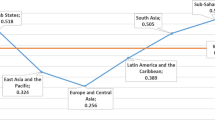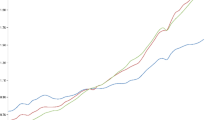Abstract
The Sustainable Development Goals (SDGs) provide a broad spectrum of economic, social and environmental goals to be achieved by 2030. The Yangtze River Economic Zone (YREZ) is an important national regional development strategy in China. National and regional development strategies like the YREZ play a crucial role in achieving the SDGs. Therefore, this paper presents an assessment method for measuring progress of SDGs at the local level and takes the case of the YREZ in China. The local SDGs indicator framework is developed based on availability of good data and alignment with the global indicator framework (SGIF), including 60 indicators covering 17 goals. The local SDGs index and three target indexes are aggregated based on entropy-weighting method. The SDGs progress of each province (municipality) in the YREZ is assessed based on the proposed method. The results show that: (1) all eleven provinces (municipalities) in the YREZ face significant challenges in achieving the SDGs, (2) the local SDGs index is not only correlated with economy development but also with other factors, such as environmental protection and social development; (3) even the wealthiest provinces (municipalities) also face major challenges in meeting several goals of the SDGs, and some poor provinces (municipalities) have achieved good performance in some goals.






Similar content being viewed by others
References
Allen, C., Metternicht, G., & Wiedmann, T. (2016). National pathways to the Sustainable Development Goals (SDGs): A comparative review of scenario modelling tools. Environmental Science & Policy, 66, 199–207.
Allen, C., Nejdawi, R., El-Baba, J., Hamati, K., Metternicht, G., & Wiedmann, T. (2017). Indicator-based assessments of progress towards the sustainable development goals (SDGs): A case study from the Arab region. Sustainability Science, 12(6), 975–989.
Adams, B., & Judd, K. (2016). 2030 Agenda and the SDGs: Indicator framework, monitoring and reporting. Retrieved February 18, 2019 from https://www.globalpolicywatch.org/blog/2016/03/18/2030-agenda-sdgs-indicator.
Chen, J., Peng, S., Chen, H., Zhao, X., Ge, Y., & Li, Z. (2020). A comprehensive measurement of progress toward local SDGs with geospatial information: methodology and lessons learned. ISPRS International Journal of Geo-Information, 9(9), 522.
Delgado, A., & Romero, I. (2016). Environmental conflict analysis using an integrated grey clustering and entropy-weight method: A case study of a mining project in Peru. Environmental Modelling & Software, 77(3), 108–121.
Fang, C., Wang, Z., & Liu, H. (2020). Beautiful china initiative: Human-nature harmony theory, evaluation index system and application. Journal of Geographical Sciences, 30(5), 691–704.
Gang, L., Shi, P., Feng, H., Yi, Z., & Li, X. (2018). Study on measurement of green productivity of tourism in the Yangtze River Economic Zone, China. Sustainability, 10(8), 2786.
Hafezalkotob, A., & Hafezalkotob, A. (2016). Extended multimoora method based on shannon entropy weight for materials selection. Journal of Industrial Engineering International, 12, 1–13.
He, Y., Chen, L., & Zhou, X. (2016). Spatial econometric analysis of the eco-efficiency promotion of the Yangtze River Economic Belt: From the perspective of financial agglomeration and industrial structure optimization. Ecological Economy, 32(1), 22–26.
Inter-agency and Expert Group on SDG Indicators (IAEG-SDGs). 2017. Global indicator framework for the Sustainable Development Goals and targets of the 2030 Agenda for Sustainable Development. Retrieved July 18, 2019 from https://unstats.un.org/sdgs/indicators/indicators-list.
Jabbari, M., Motlagh, M. S., Ashrafi, K., Abdoli, G., & Hens, L. (2020). Differentiating countries based on the sustainable development proximities using the SDG indicators. Environment, Development and Sustainability, 22, 6405–6423.
Liu, C., Zhang, R., Min, W., & Xu, J. (2018). Measurement and prediction of regional tourism sustainability: An analysis of the Yangtze River Economic Zone, China. Sustainability, 10(5), 1321.
Liu, D. J., & Li, L. (2015). Application study of comprehensive forecasting model based on entropy weighting method on trend of pm2.5 concentration in guangzhou, china. International Journal of Environmental Research and Public Health, 12, 7085–7099.
Lu, Y., Nakicenovic, N., Visbeck, M., & Stevance, A. S. (2015). Policy: Five priorities for the un sustainable development goals. Nature, 520(7548), 432–433.
Mai, T., & Kim, S. (2017). Automatic image thresholding using otsu’s method and entropy weighting scheme for surface defect detection. Soft Computing, 2, 1–7.
Maurice, & John. (2016). Measuring progress towards the SDGs-a new vital science. Lancet, 388(10053), 1455–1458.
Ministry of Foreign Affairs of the People’s Republic of China. (2019). China's Progress Report on Implementation of the 2030 Agenda for Sustainable Development. Retrieved July 18, 2019 from http://www.xinhuanet.com/english/2019–09/26/c_138424540.htm.
Moomen, A. W., Bertolotto, M., Lacroix, P. & Jensen, D. (2019). Inadequate adaptation of geospatial information for sustainable mining towards agenda 2030 sustainable development goals. Journal of Cleaner Production, 238, 117954.
Mazziotta, M., & Pareto, A. (2016). On a Generalized non-compensatory composite index for measuring socio-economic phenomena. Social Indicators Research, 127(3), 983–1003.
Nasser, A. A., Alkhulaidi, A. A., Ali, M. N., Hankal, M., & Al-Olofe, M. (2019). A study on the impact of multiple methods of the data normalization on the result of SAW, WED and TOPSIS ordering in healthcare multi-attributtes decision making systems based on EW, ENTROPY, CRITIC and SVP weighting approaches. Indian Journal of Science and Technology, 12(4), 1–21.
Nhemachena, C., Matchaya, G., Nhemachena, C. R., Karuaihe, S., Muchara, B., & Nhlengethwa, S. (2018). Measuring baseline agriculture-related sustainable development goals index for southern africa. Sustainability, 10(3), 849.
Pan, D., Hong, W., & Kong, F. (2020). Efficiency evaluation of urban wastewater treatment: evidence from 113 cities in the Yangtze River economic belt of China. Journal of Environmental Management, 270, 110940.
Persson, Å., Weitz, N., & Nilsson, M. (2016). Follow-up and review of the sustainable development goals: alignment vs. internalization. Review of European Comparative & International Environmental Law, 25(1), 59–68.
Phillips, J. (2020). The application of the geocybernetic assessment matrix to the UN 2030 sustainable development goals. Environment Development and Sustainability, Retrieved December 20, 2020 from https://doi.org/10.1007/s10668-020-00932-6.
Schmidt-Traub, G., Kroll, C., Teksoz, K., Durand-Delacre, D., & Sachs, J. D. (2017). National baselines for the Sustainable Development Goals assessed in the SDG Index and Dashboards. Nature Geoscience, 10, 547–555.
Singh, D., & Singh, B. (2019). Investigating the impact of data normalization on classification performance- sciencedirect. Applied Soft Computing, 97, 105524.
Shulla, K., Filho, W.L., Lardjane, S., Sommer, J. H., Salvia, A.L., & Borgemeister, C. (2019). The contribution of regional centers of expertise for the implementation of the 2030 agenda for sustainable development. Journal of Cleaner Production, 237(10), 117809.1–117809.
Tong, C., Ye, W., & Hou, B. (2006). Developing an environmental indicator system for sustainable development in china: Two case studies of selected indicators. Environmental Management, 38(4), 688.
United Nations. (2019). The sustainable development goals report 2018. New York: United Nations Statistics Division. Retrieved July 18, 2019 from https://unstats.un.org/sdgs/report/2018.
United Nations. (2018). The sustainable development goals report 2017. New York: United Nations Statistics Division. Retrieved July 18, 2019 from https://unstats.un.org/sdgs/fles/report/2017/thesustainabledevelopmentgoalsreport2017.pdf.
United Nations. (2015). Transforming our world: The 2030 agenda for sustainable development. Retrieved July 18, 2018 from sustainable development: https://sustainabledevelopment.un.org/post2015/transformingourworld.
United Nations Statistics Division. (2017). Work of the statistical commission pertaining to the 2030 agenda for sustainable. Retrieved July 18, 2019 from UN-GGIM: http://ggim.un.org/documents/A_RES_71_313.pdf.
Van Vuuren, D. P., Kok, M., Lucas, P. L., Prins, A. G., Alkemade, R., Maurits, V., Bouwrnan, L., Stefan, V. D. E., Jeuken, M., & Kram, T. (2015). Pathways to achieve a set of ambitious global sustainability objectives by 2050: Explorations using the image integrated assessment model. Technological Forecasting & Social Change, 98, 303–323.
Xu, Z., Chau, S. N., Chen, X., Zhang, J., & Liu, J. (2020). Assessing progress towards sustainable development over space and time. Nature, 577(7788), 74–78.
Zou, Z. H., Yi, Y., & Sun, J. N. (2006). Entropy method for determination of weight of evaluating indicators in fuzzy synthetic evaluation for water quality assessment. Journal of Environmental Sciences, 18(005), 1020–1023.
Author information
Authors and Affiliations
Corresponding authors
Ethics declarations
Conflict of interest
The authors delcare that they have no conflict of interest.
Additional information
Publisher's Note
Springer Nature remains neutral with regard to jurisdictional claims in published maps and institutional affiliations.
Rights and permissions
About this article
Cite this article
Wei, D., Liu, B., Duan, Z. et al. Measuring local progress of the 2030 Agenda for SDGs in the Yangtze River Economic Zone, China. Environ Dev Sustain 24, 7178–7194 (2022). https://doi.org/10.1007/s10668-021-01743-z
Received:
Accepted:
Published:
Issue Date:
DOI: https://doi.org/10.1007/s10668-021-01743-z




